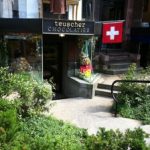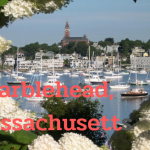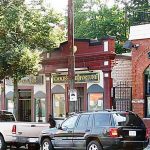Objectively speaking, there’s not much to love about dive bars—most are dingy, dark and have a lousy drink selection. But you can’t help but fall for them, not just for the dollar drafts and the free popcorn, but because it’s your neighborhood bar, your place to kick your feet up on a cracked vinyl booth and your place to get wasted on whisky and tell your life story to the dude sitting on the stool next to you.

Luke O'Neil
Plus, “You can learn a lot about a neighborhood from its dive bar, who goes there and what goes on,” according to Boston nightlife writer, Luke O’Neil who wrote Boston’s Best Dive Bars: Drinking and Diving in Beantown. The book is a compilation of 90 dive bar reviews, divided by neighborhood and ranked on a scale of one (fun for the whole family) to five (a wretched hive of scum and villainy) beer bottles.
There are the fratty, college dives like Punter’s Pub in Mission Hill, a college nabe where Northeastern and Wentworth kids hit up Punter’s to get wasted on the cheap.
Then there are the truly gritty ones, like BK’s in Roslindale, which O’Neil writes “practically has a glowing neon sign that says ‘ex-cons welcome,’ flashing in the window.” While Roslindale is improving and has a strong community feel, BK’s is a remnant of the seedier parts.

The Silhouette
And of course, there are the hipster hangouts like The Silhouette in Allston. On any given night, Allston townies will be mixing with tattooed, nose-ringed 20-somethings, sharing cigs in the fenced-off smoking area or throwing darts and sipping on PBR pitchers.
Like Boston’s neighborhoods, many of the city’s dive bars could once be drawn along racial or cultural lines, say O’Neil. The lines are smudged today, but a bar like Riverside Pizza in Cambridge, which has a predominantly African-American crowd, still shows its cultural past.
“Relocate this bar into any other neighborhood, maybe even a few blocks over, and it would look much like literally any other dive you’ll find in Cambridge. But demographics, and history, have a way of transforming the makeup of a crowd,” O’Neil writes in the review.
It’s also a place where neighborhood family values run strong.
“A three-generation deep family is eating next to me at the bar, granddad on down,” O’Neil writes. “If you stay here drinking late enough the owners will bring over a few free pies at the end of the night. Family. Generosity. Community.”

Riverside Pizza
Geography is significant in defining dive bar and neighborhood characteristics too. Dives like Eddie C’s in East Boston, separated from the rest of the city by the harbor, have a diverse immigrant population and like much of Eastie, can be resistant to outsiders.
According to O’Neil, a dive bar is “a place that sort of feels like it’s been lived in and that’s been there forever and you can’t really imagine it changing.”
Which also makes dive bars a surprisingly excellent standard to measure how much a neighborhood has changed.
In his review of Ace’s High in Columbus Park/Andrew Square (an industrial nabe that is morphing into a more residential, hip area) O’Neil describes how this eyesore dive sits directly across from a new luxury condo development.
“This is the type of bar where you can feel the push and pull of the opposing forces working on it from either end. On the one hand, it’s a total dive’s dive,” he writes in the review. “On the other, it’s a fairly popular spot among the younger area crowd on weekends.”
And as other nabes like Charlestown and South Boston continue to gentrify, more dive bars continue to close.
“I wouldn’t be surprised if in the next 10 years half the places I wrote about are gone,” says O’Neil.
Not to fear though. If you’re searching for the cream of the dive bar crop, you don’t have to look too far, says O’Neil.
“The best dive bar in the world is the one on your block.” What does your local dive bar tell you about your neighborhood?





